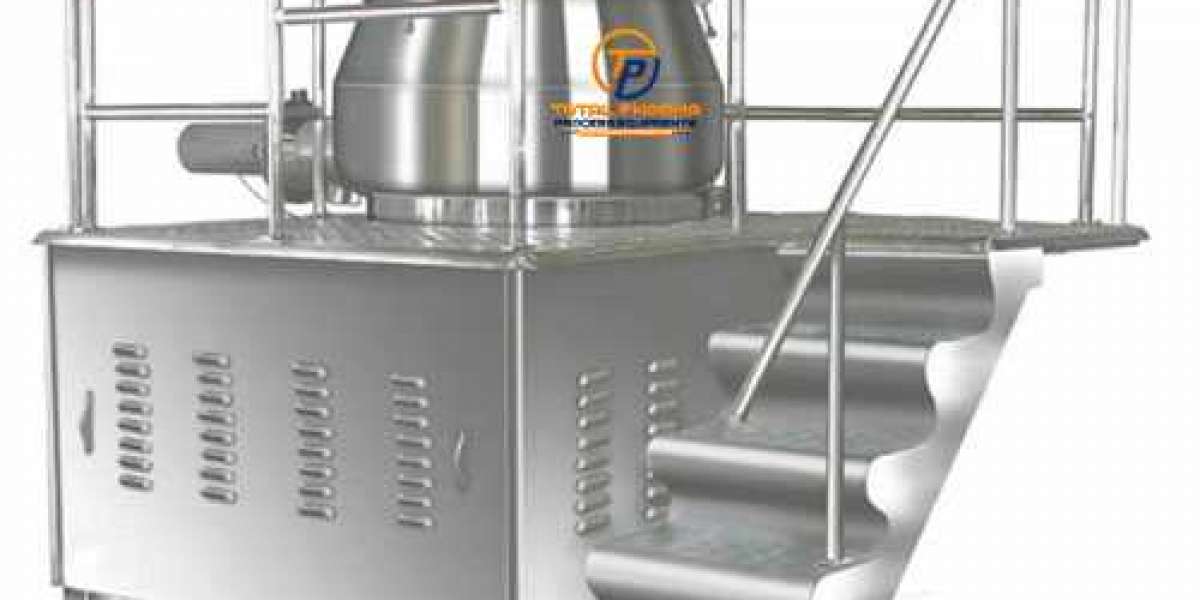While it provides high efficiency and consistent granule formation, operational challenges can sometimes arise. Understanding and troubleshooting common issues can help ensure smooth operations, maintain product quality, and prevent unnecessary downtime.
This guide covers some of the most common problems encountered in Rapid Mixer Granulator, their possible causes, and effective troubleshooting techniques.
1. Granules Not Forming Properly
Possible Causes:
Insufficient or excessive binder solution
Improper mixing time or speed
Incorrect powder composition
Poor impeller or chopper functionality
Troubleshooting Steps:
Adjust the binder solution quantity as per formulation requirements.
Optimize mixing speed and time to ensure uniform granule formation.
Ensure that raw materials are of the correct particle size and moisture content.
Check the impeller and chopper blades for wear and tear, and replace them if necessary.
2. Excessive Granule Size Variation
Possible Causes:
Uneven distribution of binder solution
Over-mixing or under-mixing
Improper blade configuration
Troubleshooting Steps:
Ensure that the binder is uniformly distributed by using proper spraying techniques.
Optimize mixing duration and speed according to batch size and formulation.
Inspect and adjust impeller and chopper settings for consistent granule size.
3. Machine Vibration and Noise Issues
Possible Causes:
Loose mechanical parts
Misaligned impeller or chopper
Worn-out motor or bearings
Troubleshooting Steps:
Tighten all bolts and mechanical connections.
Realign the impeller and chopper blades properly.
Lubricate or replace worn-out bearings and inspect the motor for defects.
4. Overheating of the Granulator
Possible Causes:
Prolonged operation without cooling breaks
Overloading the machine
Faulty motor or excessive friction in moving parts
Troubleshooting Steps:
Implement scheduled operation intervals with cooling periods.
Avoid overloading by operating within the recommended batch size.
Check and lubricate moving components and inspect the motor for overheating issues.
5. Chopper Not Functioning Properly
Possible Causes:
Motor failure or electrical issues
Blocked or jammed chopper blades
Incorrect blade settings
Troubleshooting Steps:
Inspect electrical connections and the motor for faults.
Clean and clear any debris obstructing the chopper.
Adjust the blade configuration to ensure efficient granulation.
6. Uneven Mixing of Ingredients
Possible Causes:
Incorrect mixing speed
Poor impeller and chopper blade configuration
Inadequate distribution of binder solution
Troubleshooting Steps:
Adjust the mixing speed to achieve uniform blending.
Inspect and modify blade angles for improved material movement.
Ensure the binder is evenly sprayed during granulation.
7. Machine Stopping Unexpectedly
Possible Causes:
Power fluctuations or electrical faults
Overheating protection triggered
Motor failure
Troubleshooting Steps:
Check the power supply and voltage stability.
Allow the machine to cool before restarting if overheating is detected.
Inspect the motor for damage and replace it if necessary.
8. Granules Sticking to the Bowl
Possible Causes:
Excessive moisture content
Incorrect binder-to-powder ratio
Improper machine settings
Troubleshooting Steps:
Reduce the amount of binder or moisture in the formulation.
Optimize machine parameters such as speed and time to prevent excessive wetting.
Regularly clean the bowl to prevent material buildup.
9. Low Yield in Granulation Process
Possible Causes:
Loss of material due to improper handling
Poor granulation efficiency
Excessive fines or dust formation
Troubleshooting Steps:
Minimize material loss by ensuring proper collection and transfer methods.
Adjust processing parameters to improve granulation efficiency.
Utilize dust collection systems to reduce fine particle waste.
10. Slow Discharge of Granules
Possible Causes:
Clogged discharge valve
Sticky granules causing blockage
Poorly functioning impeller
Troubleshooting Steps:
Regularly clean the discharge valve and remove any obstructions.
Adjust granulation moisture levels to prevent stickiness.
Inspect the impeller for wear and replace if necessary.
Preventive Maintenance Tips for Rapid Mixer Granulators
Regular maintenance is key to preventing operational issues in RMGs. Here are some essential maintenance practices:
Daily Checks: Inspect machine components such as impellers, choppers, and motors for wear or damage.
Lubrication: Ensure proper lubrication of moving parts to reduce friction and wear.
Cleaning Schedule: Follow a strict cleaning protocol to prevent material buildup and contamination.
Electrical Inspection: Regularly check wiring, connections, and motors to ensure smooth operation.
Calibration: Periodically calibrate machine settings to maintain consistency in granulation.
Operator Training: Ensure that operators are well-trained in machine handling and troubleshooting techniques.
Conclusion
Troubleshooting Rapid Mixer Granulators requires a systematic approach to identifying and resolving issues. By understanding common problems and their solutions, operators can ensure smooth granulation, maintain product quality, and extend the lifespan of the equipment. Implementing preventive maintenance practices further enhances machine efficiency and reduces downtime. With proper care and troubleshooting, RMGs can continue to perform optimally in industrial applications.







